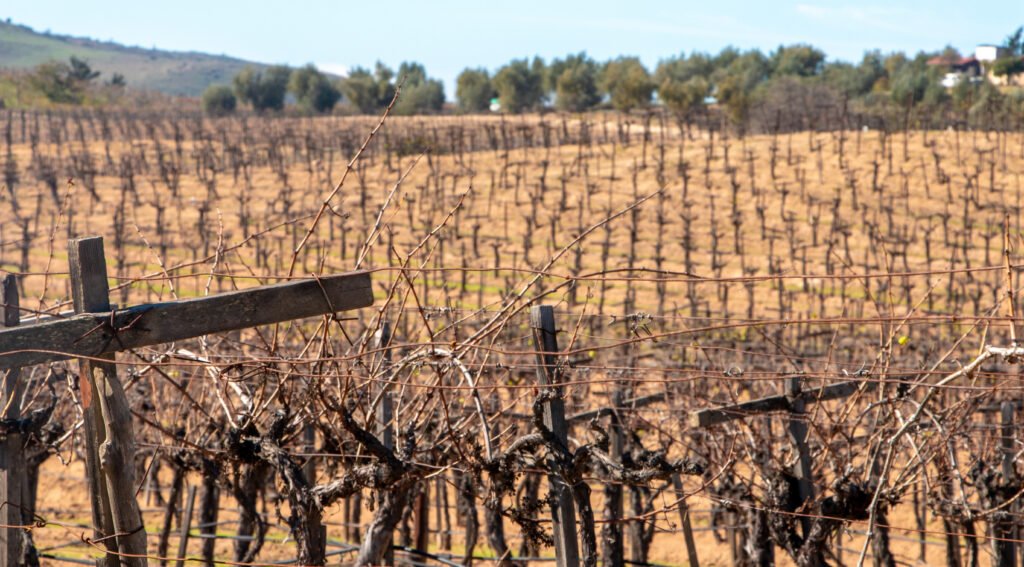There is a quiet war being waged in the Valle de Guadalupe. It has been going on for years and now can easily be seen in the rapid development scraping the land clean making way for new projects. At first it appeared to be a positive thing for the people in the small pueblos and the expansion of new wineries was exciting. Most casual visitors would not have taken notice of the more serious concerns taking place in this lush valley in Baja California. Fernando Pérez Castro, owner of Lomita winery agreed to speak for the community activist group called, Por Un Valle de Verdada, “The Fight for a Real Valley.” The people who call the Valle de Guadalupe home as well as the business men and women and the wine makers want the growth to happen in a sustainable way. This is not the case as development surges to new heights. The Valle de Guadalupe is at a cross roads and the decisions made now are the most critical for its future.
Fernando’s father brought his family to the valley sixteen years ago. Fernando joined the ongoing concerns of the other activists eight years ago. He is passionate about sustainably and the future directions of the wine culture. There are two choices to make and it will take a powerful group effort to make the correct choice between a world class wine region and tourism. The trend that is now obvious is the new investments have no respect for the three most important ingredients for a Wine producing region: Agriculture, water and landscape. He stressed, “It is import to recognize Valle de Guadalupe as a sanctuary because the weather conditions we have here and the environment we have here makes a very unique wine. We are not martyrs or tree huggers. We need to fight, because we know the direction development is taking”
Fernando states, “There are a lot of things at risk, if we don’t take care of how things are developed. For the last 25 years, the people of this region have been telling the government they have not been implementing the laws that would protect the land. There has been a level of corruption taking place…that have permitted 2500 acres of land to be sold in irregular ways.” He suggested the newest of investors are buying land without formal papers, exploiting the land not for wine production. He is clear that greed and not implementing the law are destroying the possibility of a true wine culture. “We do not need discos, Mixology, or massive events which strain the resources. It is clearly a lack of vision. If people want those things they can go to Ensenada, Rosarito, or TJ where they are already established. When people want world class wine, hotels and restaurants they will come here.”
He continues, “We have seen this story before, and we are witnessing the Valle de Guadalupe turning into something that will not sustain growth. The laws are not being implemented to protect this from happening. When you let investors exploit the tourism, not respecting the wine culture, it is enviable things will begin to happen. Agriculture, water, community and landscape have to be protected and when you don’t a different kind of business will take advantage of the tourism that the wine country already has. They will offer different experiences. So then the true nature of the wine region starts to downgrade. And when you downgrade a destination, you attract a certain type of people. Many people are looking for different experiences and looking for entertainment. Drugs are a natural progression of this downturn. What I am trying to say is that the Guadalupe wine country has all the opportunities to be upgraded in different ways.” An important note is that 75% of all Mexican wine is produced in the Valle de Guadalupe and careful growth and quality tourism is essential for future production.
Fernando continues, “There are not enough infrastructures to maintain the summer visitors and massive event. The people who live in the 3 small Pueblos suffer the most. These people and their communities have no sewage system and frequently do not have water.” He further explained, that it is obvious when thousands of people come for a weekend visit, they do not understand the impact they are making. One down turn which Fernando attributes to this issue are the deplorable road conditions with axel breaking potholes. He admitted that the roads were never meant to endure thousands of cars during hot summer days. Even the simple act of flushing a toilet becomes a monumental problem as 90% of the hotels are without sewage systems. It takes water to flush and shower; water which the grapes need. Fernando stressed, “It is becoming a social problem, a problem of sustainability, and also becoming a security problem. In the past we never heard of these kinds of problems.”
A decade ago the history of the valley claimed that only one violent death had ever happened, and the community was proud to say so. Today’s statistics are dreadful as Fernando reports, “Last year the monthly rate of violent death was one per month; now it is six per month. We need guards on our wineries because if we don’t, it threatens both the wineries and the visitors with theft and vandalism. We want sustainable tourism, and we know how to build this in a thoughtful way through appropriate landscaping with the native plants and water conservation.” Fernando sites that it is important for people to know if they are buying land in the conservation area it is illegal. These sales have been overlooked by the Ensenada Municipal for many years allowing for the current downturn in quality projects. Any investment now in the valley is at risk. Fernando worries, “I’m not sure I will have a winery to pass on to my children. It is very very uncertain that we can continue to make wine.” He further stresses, “We are not against tourism, development, nor do we hate real estate. The problem is that people don’t realize how fragile this region is. We have to protect the balance because our area is incredibly suitable for making high quality wines.”
Water is the most important factor for the future of The Guadalupe Valley region. A huge project that would be both time consuming and costly has been consider for years. This would be piping Tijuana recycled water to the valley. As one can imagine, there are many issue involved and one being the quality of the water that would be received. However, recently a delegation from Baja met with Napa Valley winemakers and business people to learn that they water exclusively now with recycled water. Any solution about the water necessary to sustain the production of wine will take time and money, Fernando knows “there is no short term solution.” He sites that in 2018 a government group studied the impact of tourism on the aquifers of the region. This diagnostic survey came back with an alarming finding. If growth continues drawing water only form the aquifers, they will be dry by 2030. That is only 8 years away and the decisions now are critical for any further developments. The “Hope” for rain has past its usefulness. It will take a clear vision to create and maintain a sustainable balance between wine production and tourism.
In Part 2 there is positive action on the horizon with a new governor taking office in two months who understands the importance of the Guadalupe Valley as a world class wine producing region. The question is will it be swift enough to avoid the inevitable outcome?
UPDATE: Part 2 of this article can be found here…
Editor’s note: Martina is a freelance writer, journalist and author of two books. Her newest book, Dust in My Sandals, Tales from a Baja Traveler, is now on Amazon. See our ad for what people are saying.


1 Comment